Cinder Block Raised Garden Bed Ideas: Creative Ways to Beautify Your Garden
Thinking about sprucing up your garden with a new project? Cinder block raised garden beds might be just what you’re looking for. They are easy to build, budget-friendly, and offer a variety of designs to fit any garden space.
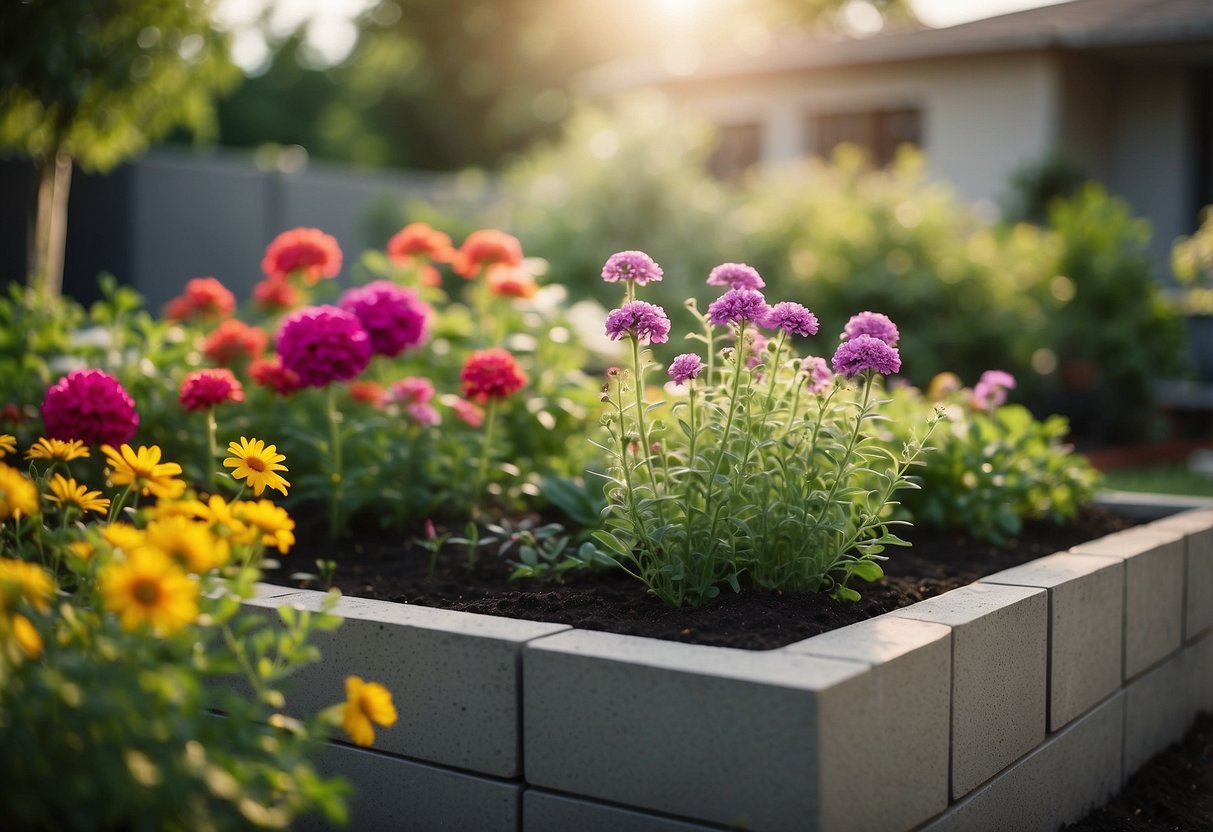
You can grow a range of plants, from vegetables and herbs to flowers. What makes cinder block raised beds truly special is their durability and flexibility in design, allowing you to get creative with your garden space. Dive into the following ideas to find the perfect raised bed project for your home garden.
1) Creative Herb Garden with Painted Blocks
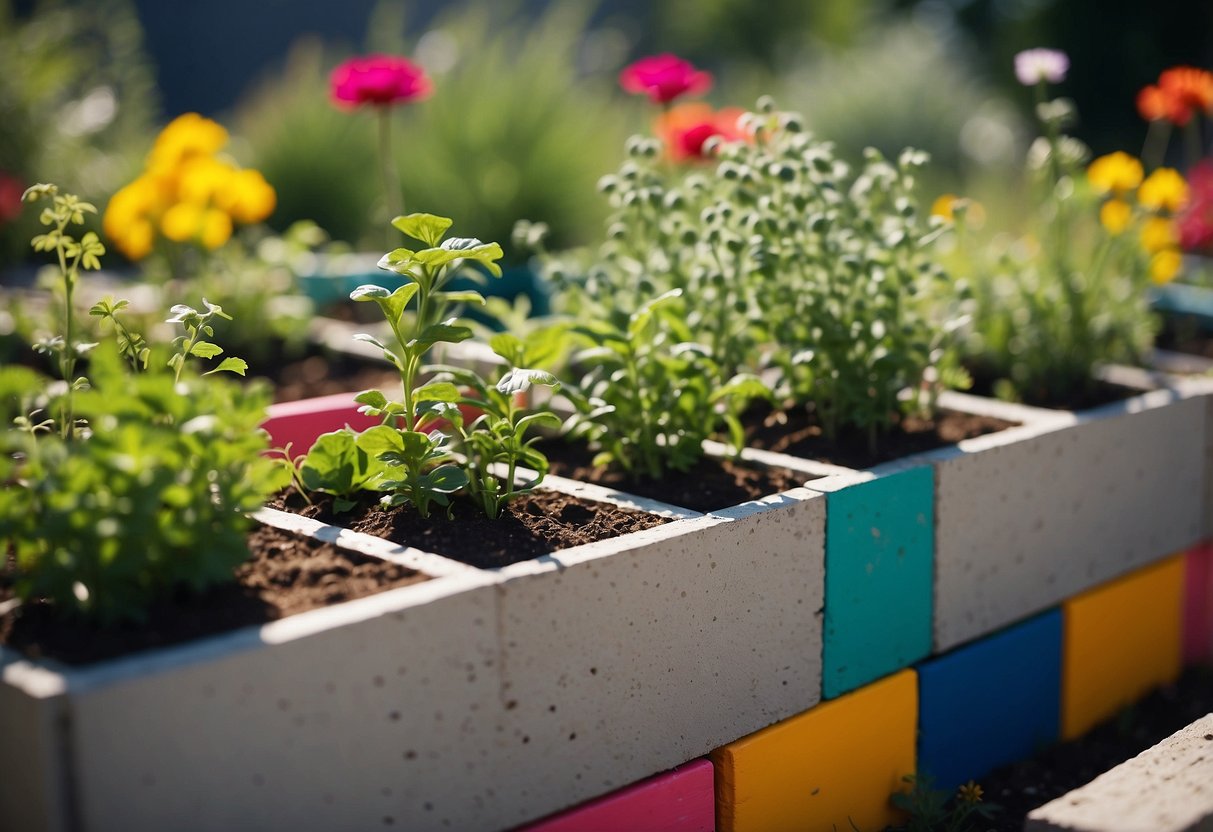
Transform your herb garden with painted cinder blocks for a fun and unique look.
Using colorful paint can add a cheerful touch to your garden. Paint each block a different color or create patterns.
Arrange the painted cinder blocks in various designs to fit your space. This will make your herbs stand out and make your garden eye-catching.
2) Vibrant Flower Bed with Colorful Blocks
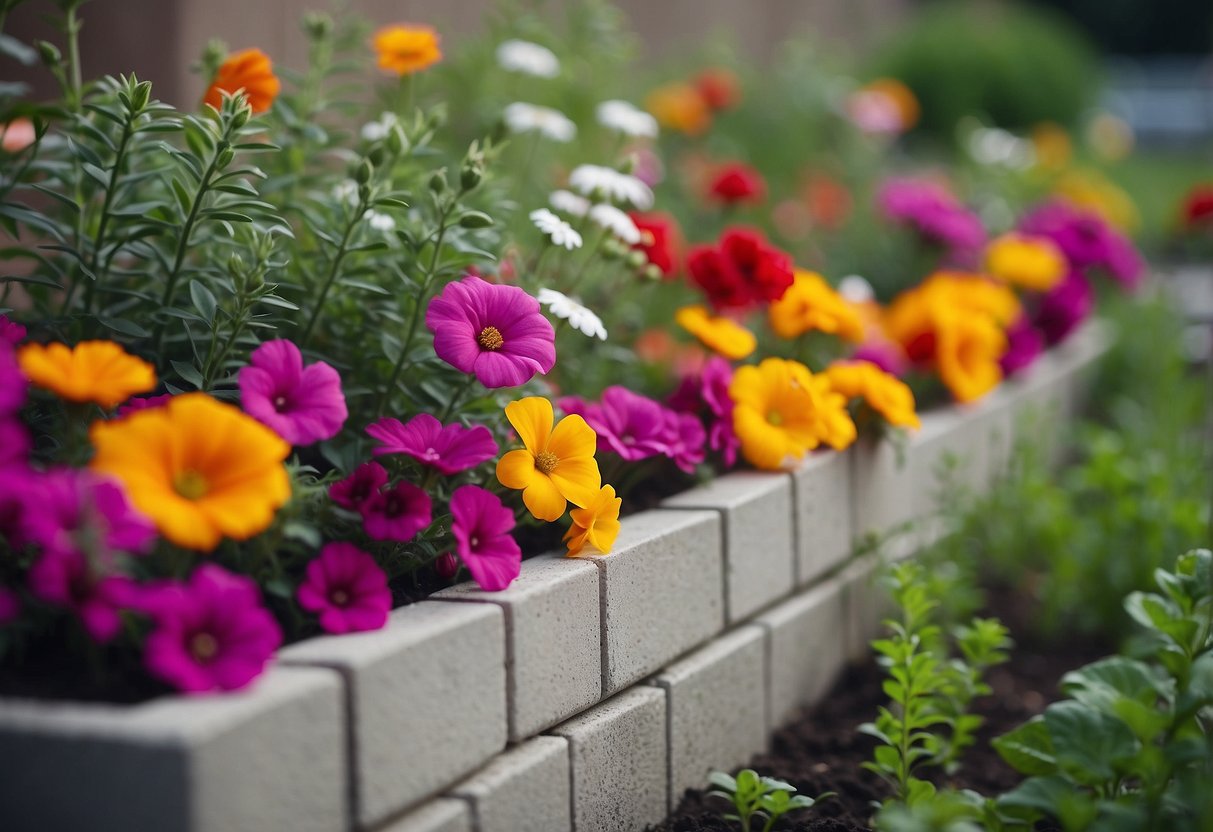
Transform your garden into a colorful paradise by using painted cinder blocks for your raised flower bed. Choose bright, cheerful colors to paint the blocks. This will not only add visual interest but also create a lively atmosphere in your garden.
Use the holes in the cinder blocks to plant smaller flowers or trailing plants. This adds extra greenery and texture. By mixing different plant types, you can create a stunning and vibrant display. For inspiration on creating colorful and unique designs, check out this example on Enthralling Gumption.
3) Cinder Block Succulent Garden

Creating a succulent garden with cinder blocks is a fun and unique idea.
Cinder blocks have hollow spaces that can hold soil and small plants, making them perfect for succulents.
You can stack the blocks in creative ways to add depth and character to your garden.
To get started, fill the hollow spaces with a cactus soil mix.
Plant your succulents and watch them thrive in their new cinder block homes.
For more ideas, check out 24 cinderblock garden ideas.
4) Tiered Vegetable Garden Bed
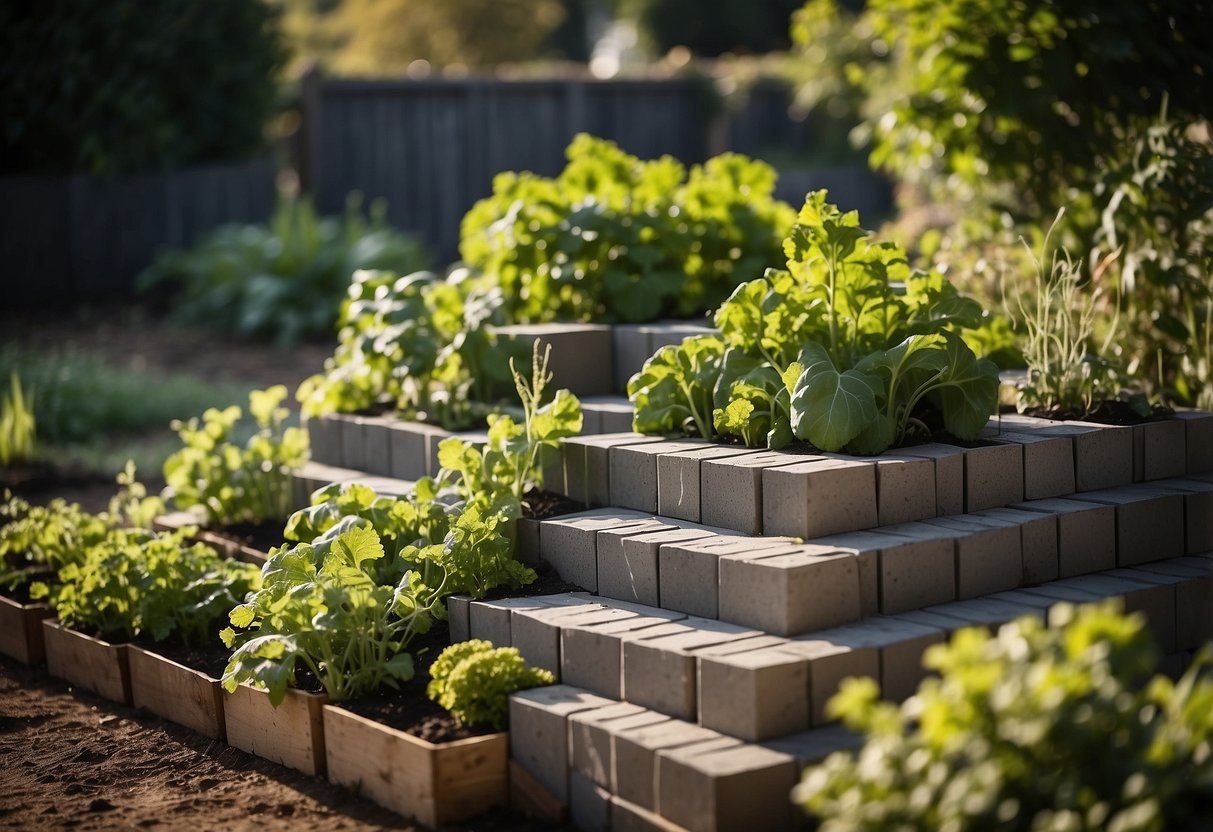
Creating a tiered vegetable garden bed with cinder blocks can maximize your growing space. Stacking the blocks in layers allows you to grow more plants vertically.
You can use the tiers to separate different types of vegetables. This arrangement makes it easy to manage and harvest your crops.
Tiered beds also add a visually appealing element to your garden. The different levels create a dynamic look, making your garden more interesting. Check out some ideas on how to build these beds at Planted Bloom.
5) Corner Cinder Block Planter

A corner cinder block planter is a great way to use those often overlooked garden corners.
You can stack cinder blocks in an L-shape to create a unique and space-efficient planter.
Use the holes in the blocks to plant flowers or herbs, adding color and life to your garden.
Make sure the blocks are level for stability and even growth.
You can also paint the blocks to match your decor.
This planter design is perfect for small spaces and adds a creative touch.
6) Modern Geometric Block Bed
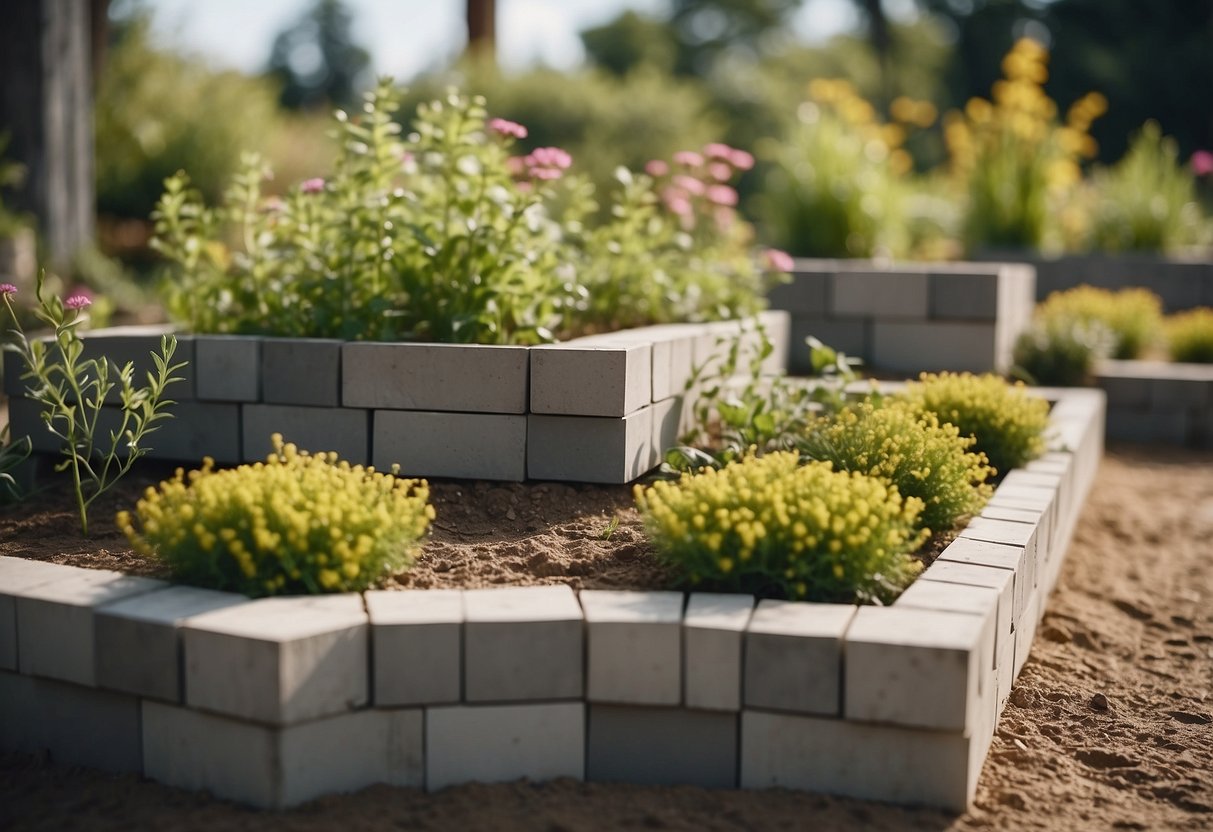
You can create a modern geometric look by arranging cinder blocks in unique patterns.
Try stacking them in a staggered formation to give a clean and contemporary style.
Position the blocks in triangles, rectangles, or creative mosaics.
This design not only looks cool but also provides different levels for planting.
Mixing and matching shapes can make your garden stand out.
7) Multi-Level Strawberry Planter
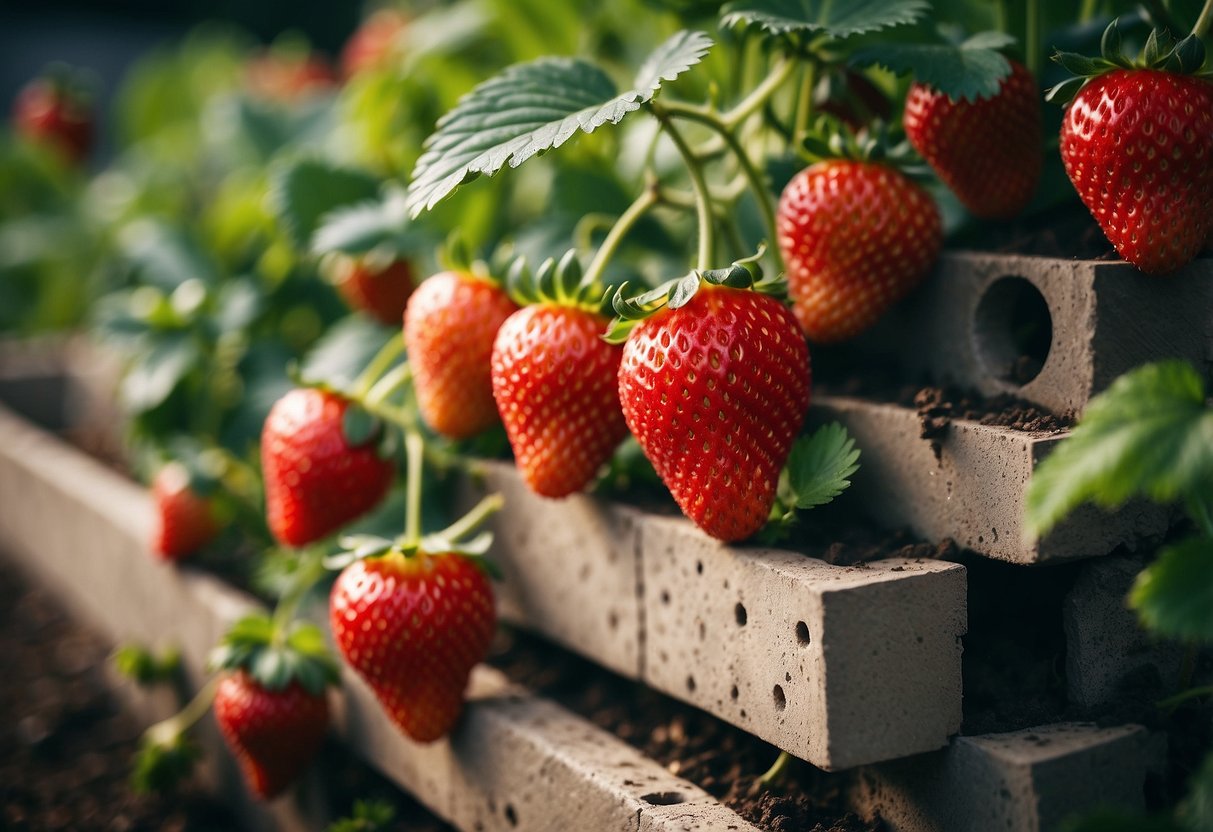
You can create a beautiful and functional multi-level strawberry planter using cinder blocks. This setup uses the height and space to grow more strawberries in a compact area. Stack cinder blocks in a step-like pattern.
Fill each block with soil rich in nutrients and microorganisms. Plant strawberries in each compartment. This method not only looks great but also makes it easier to harvest and care for your plants. For a creative touch, consider painting the cinder blocks or adding labels.
Experiment with different layouts until you find one that fits your space and style. This project is perfect for maximizing your garden’s potential.
8) Cinder Block Fairy Garden
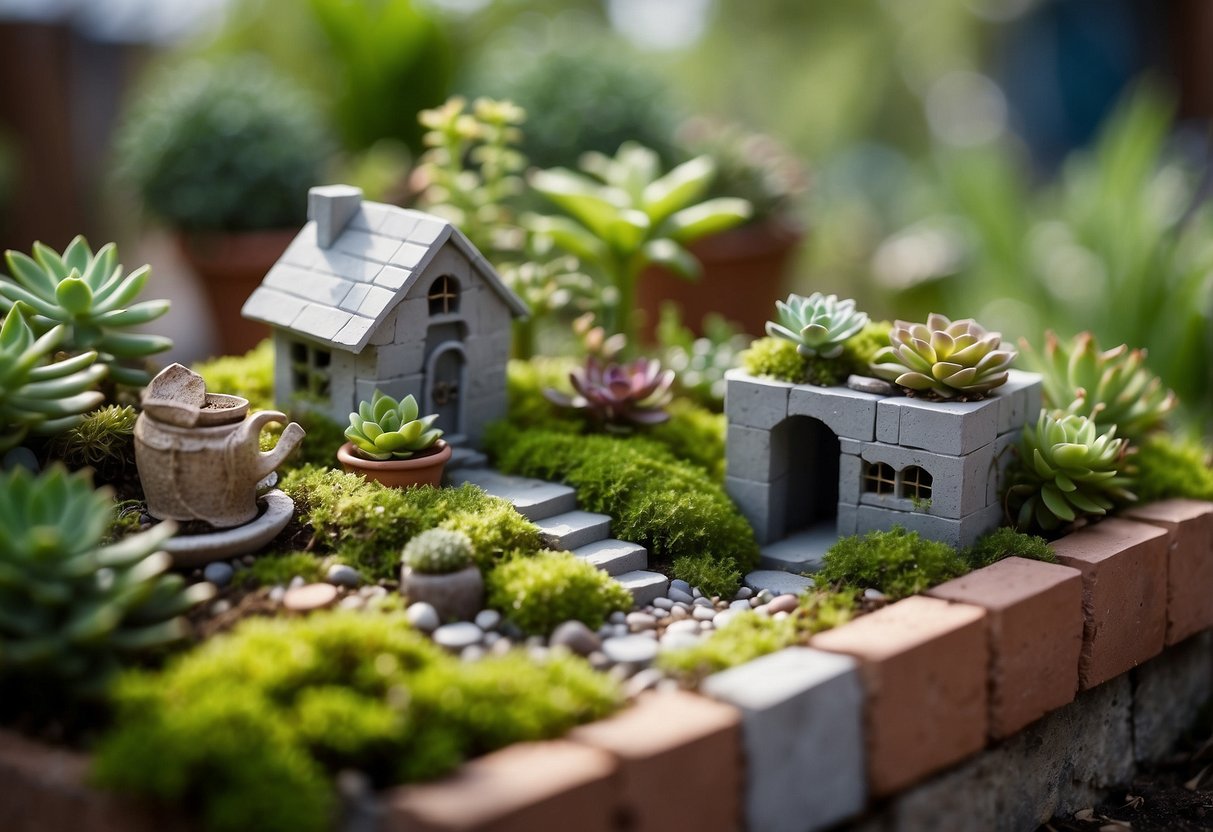
Create a magical outdoor space with a cinder block fairy garden. Stack cinder blocks to form different levels and shapes.
Add small plants and fairy figurines to bring the scene to life. Accessories like tiny houses or bridges can enhance the charm.
Use your creativity to design an enchanting miniature world. Enjoy the fun of creating a whimsical garden that delights both children and adults.
9) Kitchen Garden with Fresh Herbs

Growing a kitchen garden with fresh herbs using cinder blocks is a fantastic idea. You can plant herbs like basil, rosemary, and thyme. These herbs not only enhance your meals but also bring pleasant aromas into your space.
Cinder blocks provide a sturdy structure and keep your garden organized. They also keep pests away and are easy to set up. For more ideas, check out this raised bed herb garden.
10) Spiral Cinder Block Bed

A spiral cinder block bed is a unique and eye-catching design for your garden.
Start with a small circle of cinder blocks at the center and gradually add more blocks outward in a spiral shape.
This design is perfect for growing herbs or small vegetables.
The spiral shape allows for easy access to all your plants and helps with drainage.
Have fun experimenting with different heights and layouts to make your spiral garden truly yours.
Benefits of Using Cinder Blocks in Raised Garden Beds

Using cinder blocks for raised garden beds offers several advantages. They provide remarkable durability and long-term use, are cost-effective, and offer many design possibilities to optimize your garden space.
Durability and Longevity
Cinder blocks are known for their durability. Made from concrete, they can withstand harsh weather conditions and do not decay or warp. This means you won’t have to worry about replacing your garden bed frequently. Unlike wood, which can rot or be damaged by insects, cinder blocks remain sturdy over time.
Additionally, cinder blocks are fire-resistant. This makes them safe to use in areas prone to wildfires. Their heavy weight also ensures that your garden bed remains stable and unaffected by strong winds.
Cost-Effectiveness
Using cinder blocks is a budget-friendly choice for building raised garden beds. They are often less expensive than other materials like wood or stone. This cost savings is especially helpful if you plan to create multiple beds or a large garden area.
Furthermore, cinder blocks are readily available at most home improvement stores. You can often find used or surplus blocks for an even lower price. This makes it easy to start your garden project without spending a lot of money.
Versatility in Design
Cinder blocks offer a great deal of design flexibility. The holes in the blocks can be used for additional planting space, which is perfect for growing herbs or flowers. You can stack the blocks to create multiple levels, adding visual interest to your garden.
You can also arrange the blocks in various patterns to suit your garden layout. Whether you prefer a rectangular, square, or more intricate shape, cinder blocks allow you to customize your raised beds. This versatility helps you make the most of your garden space, no matter its size or shape.
Design Ideas and Inspiration

Creating a cinder block raised garden bed offers both functionality and creativity. You can use different layouts and add personal touches with colors and textures to make your garden unique.
Creative Layouts
A flexible layout lets you maximize space and add visual interest. One idea is a vertical cinder block wall, which saves space and can act as a planter for herbs or flowers. Another option is the classic rectangular bed, which is simple yet effective for growing vegetables.
For a more elaborate design, try tiered garden beds. This layout is excellent for different plant heights and adds dimension. You could also use U-shaped or L-shaped beds to create walkways and easier access.
Color and Texture Options
You can make your garden bed stand out by using colors and textures. Painting cinder blocks with bright colors or patterns can add a playful touch. If you prefer something subtle, choose earth tones for a natural look. Adding themed designs, like floral patterns or geometric shapes, can also enhance the appearance.
Texture is another way to add interest. Cover cinder blocks with surface bonding cement for a smooth finish. Alternatively, you can use textured paints to create a rough or gritty feel. Some gardeners even incorporate mosaic tiles into their designs for a more artistic look.
Using these ideas, you can transform basic cinder blocks into a beautiful and functional garden feature that reflects your personal style.
Construction Tips and Advice

Learn how to choose the best spot for your cinder block raised garden bed and follow a detailed guide to build it step-by-step.
Choosing the Right Location
Your garden bed needs at least six hours of sunlight per day. This ensures your plants grow healthy and strong. Check for any large trees or buildings nearby that may cast shadows.
Pick an area with good drainage. You don’t want water to pool around your blocks, which can cause them to shift.
It’s a good idea to plan for easy access to a water source. This makes it more convenient to water your plants regularly.
Consider your garden layout. Place your garden beds where they won’t obstruct paths or other garden areas. This helps keep your garden organized.
Step-by-Step Building Guide
-
Measure and Mark: Use stakes and string to outline your garden bed. This helps ensure straight lines and accurate dimensions.
-
Lay the Base Blocks: Arrange the first layer of cinder blocks in the marked area. Make sure they are level and aligned.
-
Build Up: Continue stacking. Typically, two to three layers of cinder blocks are a good height. Ensure each block is level before moving to the next.
-
Fill with Soil: Add a mix of soil and compost to fill your garden bed. This provides nutrients and good drainage.
-
Plant Your Garden: Place your plants in the soil, spacing them according to their needs. Water them well to help them settle in.
Check out this guide on building a cinder block raised garden bed for more details: building a cinder block raised garden bed.







